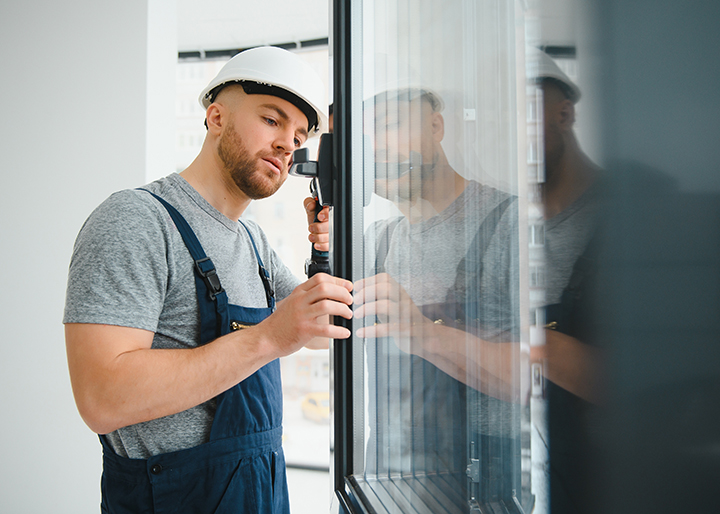Why You Should Go Green with your SFR Properties

Renters Will Pay a Premium
By Anthony Scotese
The benefit of “going green” with your single-family rental (SFR) properties does not stop with the environmental impact alone (although that is certainly cause for celebration). Investors have also enjoyed financial benefits as well, such as improving property value, minimizing tenant complaints and improving tenant retention. Plus, studies show that renters favor living in energy-efficient buildings and will pay a premium to live in these spaces.
The Benefit of Going Green
Many of us have spent time thinking about our environmental impact and ways to minimize our carbon footprint. From eliminating single-use plastics from our lives to carpooling with co-workers, there are many ways — big and small — to live a little “greener” and be kinder to mother earth.
Living greener and healthier lives starts in the home. Renters are increasingly taking green living into consideration when searching for places to live. What once may have been considered a passing fad is now quickly becoming table stakes for many would be renters. According to a recent survey of more than 2,000 U.S. renters from MRI Software, 40% of respondents stated they would not rent a property that did not include green practices.
So, What is at Stake?
Residential and commercial buildings accounted for 13% of greenhouse gas emissions in 2021, according to data from the Environmental Protection Agency. Fossil fuels that are used to provide heating and cooling to residential homes and apartment buildings are all contributing to these emissions. And adjusting residential properties is not just a recommendation in some states and cities, it is mandated.
For example, owners of apartment buildings in New York City must get their buildings in compliance with Local Law 97 by 2024, a part of the city’s Climate Mobilization Act of 2019, or face millions of dollars in fines per year. On the west coast, the California Green Building Standards Code provides guidance on the mandatory and voluntary sustainable construction practices for residential and commercial buildings in California. And while some of these considerations are more geared toward multifamily dwellings, if state and local mandates such as these continue to be a trend, it would behoove landlords to start making these green adjustments to their investment and SFR properties sooner, rather than later.
Aside from reducing harmful emissions, making green enhancements to SFR investment properties can pay off — literally and figuratively — in the long run. Making adjustments that can minimize drafts – like new weatherstripping, insulation and energy efficient heating and cooling systems — can cut back on energy bills, tenant complaints and maintenance costs.
Other small to mid-level enhancements like installing energy-efficient lighting and smart thermostats could help save hundreds of dollars per year, while larger projects like installing energy efficient heat pumps could potentially yield savings in the thousands annually per household.
What’s more, making green updates to a home can help increase its property value. And, if you are ever considering selling off some of the properties you have made green enhancements to, you could pocket more. Freddie Mac research shows that homes that had high-efficiency ratings sold more on average than homes that did not — 2.7% more, in fact.
Four Improvements to Consider
Going green seems like a big undertaking — whether you have five or 500 SFR properties. So, how can you start on the smaller scale, while still making a big impact on your carbon footprint and your wallet? Here are four areas to consider:
Replacing windows
Say goodbye to those thin, drafty windows and say hello to new, ENERGY STAR qualified windows. With features such as invisible glass coatings, multiple panes and stronger weather stripping, you are able to better control heat gain and loss. Another bonus: According to ENERGY STAR, installing these qualified windows can lead to reduced energy bills by “about 7-24% compared to non-qualified windows.”
Installing insulation
Installing or improving insulation is another option to consider in helping to reduce energy bills. According to the U.S. Department of Energy, adding insulation to spaces like attics, crawl spaces, floors and more, can help save, on average, up to 20% on a home’s heating and cooling costs.
Updating appliances
Consider swapping in new, ENERGY STAR label appliances that use less energy to run. For example, an ENERGY STAR label washing machine uses less energy and water than agitator washing machines – 25% less energy and 70-75% less water, respectively.
Faucets and showerheads
Leaky old faucets and showerheads in your rental properties could mean you are leaking money. According to energy.gov, one drip per second from a single leaking faucet wastes 1,661 gallons a year, which translates to around $35. And while $35 is nothing too concerning, for an investor with several hundred properties in their portfolio, that figure can grow exponentially.
Consider installing faucet aerators and low-flow showerheads in your properties to ensure maximum water efficiency. WaterSense labeled faucets and aerators — that can even be installed onto existing faucets — are more efficient than standard models. How efficient? Models that bear the WaterSense label can save around 700 gallons of water a year, according to epa.gov.
Outsourcing to Save Time
You do not have to go it alone. Working with a trusted partner, who specializes in the management of rehab projects and can oversee the project from start to finish by sourcing local contractors, can take the burden off your plate and provide you with the peace of mind that the job will be done right. Consider if outsourcing these enhancements at-scale makes sense for you.














